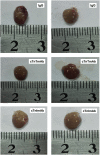Cardiac troponin I autoantibody induces myocardial dysfunction by PTEN signaling activation
- PMID: 31474552
- PMCID: PMC6796505
- DOI: 10.1016/j.ebiom.2019.08.045
Cardiac troponin I autoantibody induces myocardial dysfunction by PTEN signaling activation
Abstract
Background: The objective of the current study was to study the molecular mechanism(s) underlying cardiac troponin I autoantibody (cTnIAAb) binding to cardiomyocyte and resultant myocardial damage/dysfunction.
Methods: cTnIAAb was purified from serum of 10 acute myocardial infarction (AMI) patients with left ventricular remodeling. Recombinant human cTnI was used to generate three mouse-derived monoclonal anti-cTnI antibodies (cTnImAb1, cTnImAb2, and cTnImAb3). The target proteins in cardiac myocyte membrane bound to cTnImAb and effect of cTnIAAb and cTnImAb on apoptosis and myocardial function were determined.
Findings: We found that cTnIAAb/cTnImAb1 directly bound to the cardiomyocyte membraneα-Enolase (ENO1) and triggered cell apoptosis via increased expression of ENO1 and Bax, decreased expression of Bcl2, subsequently activating Caspase8, Caspase 3, phosphatase and tensin homolog (PTEN) while inhibiting Akt activity. This cTnIAAb-ENO1-PTEN-Akt signaling axis contributed to increased myocardial apoptosis, myocardial collagen deposition, and impaired systolic dysfunction.
Interpretation: Results obtained in this study indicate that cTnIAAb is involved in the process of ventricular remodeling after myocardial injury. FUND: The National Natural Science Foundation of China (Grant#: 81260026).
Keywords: Acute myocardial infarction; Cardiac troponin I autoantibody; Phosphatase and tensin homolog; Ventricular remodeling; α-Enolase.
Copyright © 2019. Published by Elsevier B.V.
Figures
















Similar articles
-
Inhibition of AZIN2-sv induces neovascularization and improves prognosis after myocardial infarction by blocking ubiquitin-dependent talin1 degradation and activating the Akt pathway.EBioMedicine. 2019 Jan;39:69-82. doi: 10.1016/j.ebiom.2018.12.001. Epub 2018 Dec 10. EBioMedicine. 2019. PMID: 30545799 Free PMC article.
-
Atorvastatin Inhibits Myocardial Apoptosis in a Swine Model of Coronary Microembolization by Regulating PTEN/PI3K/Akt Signaling Pathway.Cell Physiol Biochem. 2016;38(1):207-19. doi: 10.1159/000438622. Epub 2016 Jan 20. Cell Physiol Biochem. 2016. PMID: 26784958
-
Cardiac Autoantibodies Against Cardiac Troponin I in Post-Myocardial Infarction Heart Failure: Evaluation in a Novel Murine Model and Applications in Therapeutics.Circ Heart Fail. 2023 Oct;16(10):e010347. doi: 10.1161/CIRCHEARTFAILURE.122.010347. Epub 2023 Jul 31. Circ Heart Fail. 2023. PMID: 37522180
-
TIEG1 deficiency confers enhanced myocardial protection in the infarcted heart by mediating the Pten/Akt signalling pathway.Int J Mol Med. 2017 Mar;39(3):569-578. doi: 10.3892/ijmm.2017.2889. Epub 2017 Feb 13. Int J Mol Med. 2017. PMID: 28204828 Free PMC article.
-
PTEN, the Achilles' heel of myocardial ischaemia/reperfusion injury?Br J Pharmacol. 2007 Apr;150(7):833-8. doi: 10.1038/sj.bjp.0707155. Epub 2007 Feb 12. Br J Pharmacol. 2007. PMID: 17293884 Free PMC article. Review.
Cited by
-
Isorhamnetin Attenuates Isoproterenol-Induced Myocardial Injury by Reducing ENO1 (Alpha-Enolase) in Cardiomyocytes.Antioxidants (Basel). 2025 May 11;14(5):579. doi: 10.3390/antiox14050579. Antioxidants (Basel). 2025. PMID: 40427461 Free PMC article.
-
Isoproterenol mechanisms in inducing myocardial fibrosis and its application as an experimental model for the evaluation of therapeutic potential of phytochemicals and pharmaceuticals.Animal Model Exp Med. 2025 Jan;8(1):67-91. doi: 10.1002/ame2.12496. Epub 2024 Dec 17. Animal Model Exp Med. 2025. PMID: 39690876 Free PMC article. Review.
-
SARS-CoV-2 and Its Bacterial Co- or Super-Infections Synergize to Trigger COVID-19 Autoimmune Cardiopathies.Int J Mol Sci. 2023 Jul 29;24(15):12177. doi: 10.3390/ijms241512177. Int J Mol Sci. 2023. PMID: 37569555 Free PMC article.
-
LNA oligonucleotide mediates an anti-inflammatory effect in autoimmune myocarditis via targeting lactate dehydrogenase B.Immunology. 2022 Feb;165(2):158-170. doi: 10.1111/imm.13421. Epub 2021 Oct 13. Immunology. 2022. PMID: 34606637 Free PMC article.
-
Overexpression of the PTEN Gene in Myocardial Tissues of Coronary Bypass Surgery Patients.Arq Bras Cardiol. 2023 Apr 7;120(4):e20220169. doi: 10.36660/abc.20220169. eCollection 2023. Arq Bras Cardiol. 2023. PMID: 37042855 Free PMC article. English, Portuguese.
References
-
- Tang G., Wu Y., Zhao W. Multiple immunoassay systems are negatively interfered by circulating cardiac troponin I autoantibodies. Clin Exp Med. 2012;12:47–53. - PubMed
-
- Shmilovich H., Danon A., Binah O. Autoantibodies to cardiac troponin I in patients with idiopathic dilated and ischemic cardiomyopathy. Int J Cardiol. 2007;117:198–203. - PubMed
-
- Eriksson S., Hellman J., Pettersson K. Autoantibodies against cardiac troponins. N Engl J Med. 2005;352:98–100. - PubMed
-
- Pettersson K., Eriksson S., Wittfooth S. Autoantibodies to cardiac troponin associate with higher initial concentrations and longer release of troponin I in acute coronary syndrome patients. Clin Chem. 2009;55:938–945. - PubMed
MeSH terms
Substances
LinkOut - more resources
Full Text Sources
Molecular Biology Databases
Research Materials
Miscellaneous

